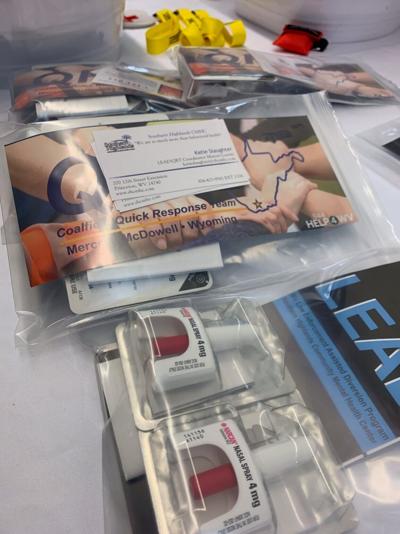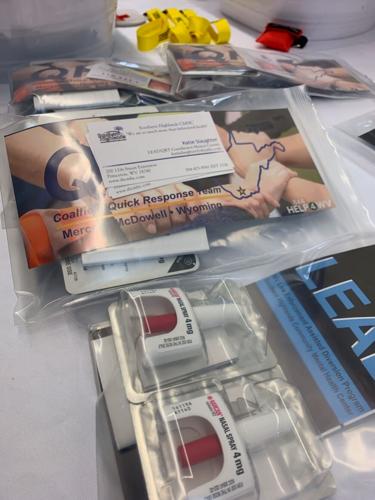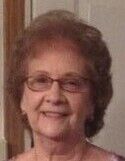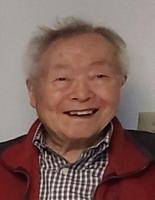FAIRMONT — This year for International Overdose Awareness Day, which took place last Thursday, West Virginia showed something that the rest of the country could not.
The state’s overdose deaths decreased slightly while the nation as a whole did not.
“We’ve seen some real improvements on that,” Laura Lander, associate professor and addiction therapist at the University of West Virginia School of Medicine, said. “The numbers for West Virginia are a little bit down in terms of overdose deaths, so that’s also good news. Almost 80% of overdose deaths nationally are the result of opioids or some combination of opioids and other substances.”
This year marks the first time in the last 5 years that the number of overdose deaths have gone down in the state. Lander credits Narcan with the outcome, as state offiicials have been working to make it widely available to the communities that need it the most.
However, that modicum of good news is tempered by the fact that stimulant use, such as meth, has gone up. Lander said historically, a pattern exists where a stimulant use problem follows a surge in opioid use.
“So there was a pretty problematic use of heroin, you know, in the 70s. And then in the 80s, we saw the crack cocaine epidemic,” Lander said. “So there are some of these predictable patterns. I’m not expert enough to speak on why exactly, but it is a pattern that we’ve seen over over history.”
Dr. Lee Smith, county health officer and physician director at Monongalia Health Department, said new strategies for tackling substance abuse, such as Quick Response Teams, reflect the change in thinking around how to best tackle the drug use epidemic. Both Mon and Marion County have QRTs.
“How we have begun to address this is that substance use disorder is multifactorial,” Smith said. “You don’t wake up one day and say ‘I’m going to, you know, be an abuser of drugs.’”
Smith pointed out that what matters is providing anyone suffering from a substance use disorder a ladder out of their current circumstances. Although whether or not to seek treatment comes down to a person’s individual choice, the presence of outside help makes it much more likely that when a person does make that choice, they can successfully climb back to wellness again.
That kind of thinking is what inspired the county to apply for the grant that led to the establishment of its Quick Response Team. One of the key features of the QRT are the peer counselors, people who have their own lived experience with substance use disorder that allows them to connect with people who are going through their own challenges.
“If I go downtown with you know, Project mushroom or just by myself or with the health department, and try to interact with people with substance use disorder, I’m just some random old man,” Smith said. “Whereas people who have had a previous experience with substance use disorder and understand the concerns, issues, the day to day challenges of that type of life, they can make inroads with that population that I am completely unable to.”
Smith pointed out that substance use disorder is not a moral failing. It’s a disease that rewires the brain. He used diabetes as an example of something similar.
If someone’s blood sugar was poorly controlled, and results in a diabetic coma or ketoacidosis, he as a doctor would still give them insulin. Same thing with substance use disorder. Keeping an addict alive allows them the chance to reach the point where they might want to end their addiction. He said there’s no scientific evidence that shows that Narcan contributes to addiction.
Brittany Trick, the QRT Coordinator for the Monongalia Health Department, said that dealing with behavioral health challenges is another piece of treating substance use disorder.
“I think one of the biggest things is trying to connect people to behavioral health services,” Trick said. “SUD and behavioral health issues are co-occurring. A large percentage of people who have SUD most likely have some sort of behavioral health illness that needs to be addressed.”
To that end, she said the health department itself is in the process of becoming a licensed behavioral health center. However, with a shortage of mental health providers in the state, Trick said that the state is still focused more on the substance use disorder side rather than co-addressing the behavioral aspect.
However, she said that the state does receive a lot of federal support for that side of the issue through the National Association of County and City Health Associations. She said there is a big push for behavioral health services through that group right now.
People suffering from substance use disorder now may be the key to helping the state further reduce its deaths from the epidemic, once they’re in recovery.
Jon Dower, executive director of West Virginia Sober Living, is a former peer counselor and has his own lived experience with substance use disorder. Paying the best and brightest like doctors and experts to work in the field is only half the picture.
“But don’t forget the people with experience. I think that it’s such an undervalued resource that we’re just starting in the last five years to identify in our state,” Dower said. “So providing them vocational opportunities across every vocational pathway is really where I would continue to incentivize and provide money so that we are really enriching people and letting them find their purpose and not letting the worst day in their life define who that person is.”




















Commented
Sorry, there are no recent results for popular commented articles.